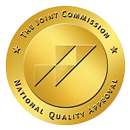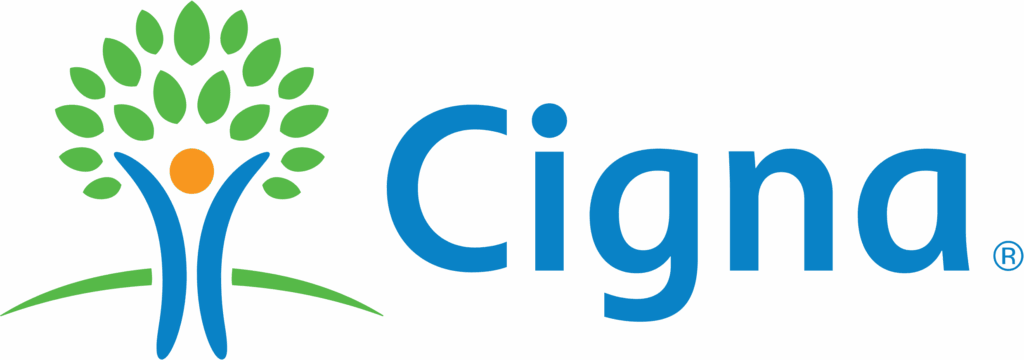
Burnout or Addiction? Recognizing the Difference in California’s Workforce
Medically Reviewed by:

Dr. Marco M. Zahedi
Medical Director, Compassion Recovery Center

Dr. Michael Majeski
Licensed Psychologist (LP), Compassion Recovery Center
Table of Contents
Understanding the Thin Line: Burnout and Addiction in the California Workplace
In the high-pressure environments that often characterize California’s diverse industries, from bustling tech hubs to demanding service sectors, employees can find themselves walking a tightrope between professional dedication and personal well-being. Two significant challenges that can emerge from this pressure are burnout and addiction. While they may sometimes appear similar on the surface, or even overlap, they are distinct conditions with different roots and require different paths to healing. Burnout is a state of chronic workplace stress that hasn’t been successfully managed, leading to feelings of exhaustion, cynicism, and reduced professional efficacy. Addiction, on the other hand, is a complex brain disorder characterized by compulsive substance use or engagement in a behavior despite harmful consequences. For individuals and employers across the Golden State, particularly in areas like Orange County, understanding the difference between burnout vs addiction is crucial. Misidentifying one for the other can lead to inappropriate or ineffective interventions, prolonging suffering and impacting both individual lives and organizational health.
The importance of distinguishing between these two conditions cannot be overstated, especially within the dynamic and often demanding California workforce burnout culture. Failing to differentiate can mean that someone struggling with addiction might be told to simply “take a vacation” to cure what is perceived as burnout, while an individual experiencing severe burnout might not receive the targeted support they need to address systemic workplace issues. Both conditions can devastate an individual’s mental and physical health, relationships, and career. This blog post aims to shed light on both burnout and addiction, exploring their definitions, symptoms, causes, and impacts, particularly within the context of California’s workforce. We will delve into the key differences between them, discuss their prevalence, and offer guidance on recognizing the signs that indicate when it’s time to seek help. Furthermore, we will explore various treatment options, with a special focus on the role of accessible and flexible telehealth addiction treatment, like the services offered by Compassion Recovery Center. Our goal is to provide clear, empathetic information to help individuals and their families navigate these challenges and find paths to recovery and well-being. We will cover how to recognize these conditions, what treatment avenues are available, including our specialized Remote IOP California programs, and how workplaces can foster supportive environments. If you or someone you know is struggling, remember that help is available, and understanding is the first step towards healing. Please reach out today for a confidential discussion about your options.

Understanding Burnout: When Work Takes Its Toll
Burnout is more than just feeling tired after a long week; it’s a specific syndrome resulting from chronic workplace stress that has not been successfully managed. The World Health Organization (WHO) officially recognized burnout in the International Classification of Diseases (ICD-11) as an occupational phenomenon, not a medical condition. However, its impact on mental and physical health can be profound. The symptoms of burnout typically fall into three main categories:
- Feelings of energy depletion or exhaustion: This is a deep-seated fatigue that isn’t alleviated by a good night’s sleep or a weekend off. It can manifest as feeling constantly drained, overwhelmed, and unable to cope with the demands of your job. You might find it difficult to concentrate or lack the motivation to start tasks.
- Increased mental distance from one’s job, or feelings of negativism or cynicism related to one’s job: Individuals experiencing burnout may become increasingly critical and pessimistic about their work and their colleagues. They might feel detached, lose enjoyment in their tasks, and adopt a “what’s the point?” attitude. This emotional withdrawal can be a self-protective mechanism against overwhelming job stressors.
- Reduced professional efficacy: Burnout can lead to a decline in job performance and a persistent feeling of incompetence. Despite long hours, you might feel like you’re not accomplishing anything meaningful, leading to a crisis of confidence and a sense of failure.
Common causes of burnout in the workplace are often rooted in the work environment and job design. These can include an excessive workload and consistently long hours, leaving little time for rest and recovery. A lack of control or autonomy over one’s work, coupled with unclear job expectations or insufficient resources, can also significantly contribute. Feeling undervalued, a lack of recognition or reward for hard work, and working in a dysfunctional or toxic work environment with poor communication or interpersonal conflict are also major drivers. For many in California, the pressure to maintain a certain lifestyle in high-cost areas adds another layer of stress, exacerbating poor work-life balance, a key contributor to burnout. The rise of remote work, while offering flexibility, has also blurred the lines between work and home life for some, potentially leading to an “always-on” culture that fuels burnout.
The impact of burnout on employees is far-reaching. Beyond decreased job satisfaction and motivation, it can lead to significant health problems, including anxiety, depression, sleep disturbances, weakened immune systems, and an increased risk of cardiovascular disease. Relationships outside of work can also suffer as individuals withdraw or bring their stress and negativity home. For organizations, the consequences of widespread burnout include reduced productivity and efficiency, increased absenteeism and presenteeism (being physically present but mentally disengaged), higher employee turnover rates, and a decline in overall morale and company culture. Addressing the root causes of burnout is therefore not just beneficial for employees but essential for the long-term health and success of any organization. If these symptoms resonate with you, it’s important to consider whether changes in your work environment or coping strategies are needed. Sometimes, talking to a professional through services like online CBT therapy can provide valuable tools for managing stress and preventing burnout from escalating.
Understanding Addiction: When Coping Crosses a Line
Addiction, also known as substance use disorder (SUD) when referring to drugs or alcohol, is a treatable, chronic medical disease involving complex interactions among brain circuits, genetics, the environment, and an individual’s life experiences. People with addiction use substances or engage in behaviors that become compulsive and often continue despite harmful consequences. It’s important to move beyond the stigma and understand addiction as a health issue that requires compassionate and professional care. Key symptoms and characteristics of addiction include:
- Impaired control: A craving or strong urge to use the substance; desire or unsuccessful attempts to cut down or control substance use.
- Social impairment: Substance use causes failure to fulfill major roles at work, school, or home; continued use despite social or interpersonal problems caused or worsened by substance use. Important social, occupational, or recreational activities are given up or reduced because of substance use.
- Risky use: Recurrent substance use in physically hazardous situations; continued use despite knowing that it’s causing or worsening a physical or psychological problem.
- Pharmacological criteria:
- Tolerance: Needing more of the substance to get the desired effect, or a diminished effect with continued use of the same amount.
- Withdrawal: Experiencing characteristic withdrawal symptoms when cutting back or stopping use, or taking the substance (or a closely related substance) to relieve or avoid withdrawal symptoms.
The common causes of addiction, particularly as they relate to the workplace, can be multifaceted. High levels of job stress, pressure, and burnout can lead some individuals to self-medicate with alcohol or drugs to cope with anxiety, depression, or physical pain. Workplace cultures that normalize or even encourage substance use, such as frequent after-work happy hours or industries where drug use is tacitly accepted, can lower inhibitions and increase risk. Easy access to substances, whether illicit drugs or prescription medications, can also play a role. Beyond the workplace, factors like genetic predisposition, a history of trauma, underlying mental health treatment conditions (co-occurring disorders), and lack of a strong support system can increase vulnerability to addiction. Job insecurity, dissatisfaction, or a sense of hopelessness about one’s career path can also contribute to developing unhealthy coping mechanisms, including substance misuse. For those struggling with these underlying issues, Dual Diagnosis Treatment is often essential for a full recovery.
The impact of addiction on employees is devastating, affecting every aspect of their lives. Health consequences can range from liver damage and cardiovascular disease to neurological impairment and increased risk of infectious diseases. Financial problems often arise due to the cost of substances and impaired job performance. Legal issues, such as DUIs or arrests related to drug possession, can have long-lasting repercussions. Perhaps most painfully, addiction strains and damages relationships with family, friends, and colleagues. For organizations, addiction in the workforce leads to decreased productivity, increased absenteeism and tardiness, a higher rate of accidents and injuries, and escalating healthcare costs. It can also result in theft, damage to company property, and a negative impact on team morale and the company’s reputation. Recognizing addiction as a health issue that requires support and treatment, rather than just a disciplinary problem, is crucial. Options like Drug Rehab Programs and Alcohol Rehab Programs, especially flexible ones like Virtual IOP Program, can make all the difference. If you are concerned about your substance use, or that of a colleague, taking the step to start your free assessment can provide clarity and direction.

Key Differences Between Burnout and Addiction: Navigating the Nuances
While both burnout and addiction can significantly impair an individual’s functioning and well-being, and sometimes even co-exist or influence each other, they are fundamentally different conditions. Understanding these distinctions is vital for ensuring that individuals receive the appropriate support and intervention. The primary difference lies in their core nature: burnout is a response to chronic, unmanaged workplace stress, whereas addiction is a primary, chronic brain disease characterized by compulsive substance seeking and use, or engagement in a behavior, despite harmful consequences.
When we compare and contrast symptoms, some overlaps can cause confusion, but key differentiators exist. For instance, both can lead to fatigue and decreased performance. However, the fatigue in burnout is typically linked to emotional and physical exhaustion from work demands, while in addiction, fatigue can be a direct effect of substance use, withdrawal, or the chaotic lifestyle that often accompanies active addiction. A person experiencing burnout might feel cynical or detached specifically about their job, their colleagues, or their career path. Their negative feelings are largely contained within the work context. Someone with an addiction, however, will experience a preoccupation with the substance or behavior that extends beyond work, affecting all areas of life. While burnout might lead someone to withdraw from work tasks or social interactions at work, addiction involves a compulsive drive towards the substance or behavior, often despite a desire to stop. Someone with burnout might fantasize about quitting their job to find relief; someone with addiction might risk their job to continue their substance use.
The psychological and physical effects also diverge significantly. Burnout’s psychological toll includes feelings of helplessness, hopelessness about work, emotional numbness, and a loss of purpose related to one’s career. Physically, it can manifest as headaches, digestive issues, muscle tension, and sleep disturbances primarily linked to stress. While these are serious, they are generally responses to external stressors. Addiction, however, involves profound changes in brain chemistry and structure. The psychological effects include intense cravings, mood swings, anxiety, depression (which can be both a cause and a consequence), paranoia, and distorted thinking. Physically, addiction can lead to a wide range of serious health problems depending on the substance, including organ damage, neurological issues, infectious diseases, and malnutrition. A critical distinction here is the concept of withdrawal – individuals with substance addiction will typically experience physical and psychological distress when they attempt to stop or reduce use, a phenomenon not present in burnout (though a person leaving a very stressful job might feel a sense of relief and ‘detox’ from the stress, this is different from physiological withdrawal).
Perhaps most critically, the approaches to treatment highlight the differences. Treating burnout typically involves strategies to manage stress, change the work environment or one’s relationship to it, and restore energy and engagement. This might include setting better boundaries, learning stress-reduction techniques through online CBT therapy, taking time off, delegating tasks, or even changing jobs or careers. The focus is on alleviating the external pressures and building coping mechanisms. Addiction treatment is generally more intensive and multifaceted. It often begins with Outpatient Detox to manage withdrawal symptoms safely. This is typically followed by a combination of behavioral therapies (like CBT, DBT), individual and group counseling, MAT treatment online (for opioid or alcohol addiction), and participation in support groups. Programs like an Intensive Outpatient Program (IOP) or Partial Hospitalization Program (PHP) provide structured support while allowing individuals to live at home. The goal of addiction treatment is to help individuals stop compulsive use, address underlying psychological issues, develop healthy coping skills, and build a sustainable recovery lifestyle. If you’re unsure whether you’re dealing with burnout, addiction, or both, a professional assessment can provide clarity. Compassion Recovery Center offers confidential assessments to help guide you to the right kind of support; you can Contact Us to learn more.
The Prevalence of Burnout and Addiction in California’s Workforce: A Growing Concern
California’s dynamic economy, known for its innovation and fast-paced industries, also creates an environment where workplace pressures can be intense. This contributes significantly to the prevalence of both burnout and addiction among its workforce. While precise, up-to-the-minute statistics can be fluid, numerous studies and reports consistently highlight high rates of California workforce burnout. For example, surveys often show that a large percentage of employees across various sectors report feeling symptoms of burnout, such as exhaustion and cynicism related to their jobs. The state’s high cost of living, particularly in metropolitan areas like those in Orange County, can exacerbate financial stress, compelling many to work longer hours or take on multiple jobs, further fueling burnout. This isn’t just an anecdotal observation; research from organizations like Gallup and Kronos has repeatedly pointed to significant portions of the U.S. workforce experiencing burnout, with states like California, with its demanding job markets, likely reflecting or even exceeding these national averages.
Similarly, addiction remains a significant public health challenge in California. Data from the California Health Care Almanac and the National Survey on Drug Use and Health (NSDUH) indicate that millions of Californians struggle with substance use disorders involving alcohol and various drugs. The opioid crisis has also impacted communities across the state, and issues with stimulants like methamphetamine and cocaine persist, alongside widespread alcohol misuse. The workplace is not immune to these trends; in fact, job stress can be a major trigger or exacerbating factor for substance misuse as individuals may turn to alcohol or drugs to cope with pressure, anxiety, or the symptoms of burnout itself.
Certain industries in California seem particularly susceptible to high rates of both burnout and addiction. The technology sector, with its culture of long hours, tight deadlines, and high-stakes innovation, frequently reports high burnout levels. Healthcare professionals, including doctors, nurses, and support staff, face immense emotional and physical demands, especially highlighted during public health crises, leading to significant burnout and, for some, an increased risk of substance use as a coping mechanism. The entertainment industry, characterized by instability, intense competition, and often a culture where substance use can be normalized, also sees its share of challenges. Furthermore, workers in the service and hospitality industries often contend with low pay, demanding customers, and irregular hours, creating a fertile ground for burnout and stress-related substance use. Even legal and financial professions, known for their high-pressure environments and demanding client expectations, report significant stress that can lead to both conditions.
The rise of remote work, accelerated by recent global events, presents a mixed picture. For some, it has offered better work-life balance and reduced commute stress. For others, it has blurred the lines between professional and personal life, leading to longer working hours, increased isolation, and a new set of stressors that can contribute to burnout. This isolation can also be a risk factor for increased substance use for those vulnerable to addiction. Fortunately, the concurrent rise and acceptance of telehealth services, including telehealth addiction treatment, offer a vital pathway to support. For individuals in busy professions or those in geographically diverse areas of California, including communities within Orange County, virtual rehab California options like those provided by Compassion Recovery Center make seeking help more accessible and less disruptive to daily life. Our Remote IOP California program is designed to fit into the lives of working professionals, providing comprehensive care from the privacy of their homes. If you are seeking remote drug rehab Orange County, we are here to help.
Recognizing the Signs: When to Seek Help for Burnout or Addiction
Recognizing the early warning signs of burnout or addiction in oneself or others is a critical first step towards seeking help and preventing these conditions from escalating. Often, the signs can be subtle at first, easily dismissed as “just a bad week” or “letting off steam.” However, persistent patterns of negative changes in behavior, mood, or physical health warrant closer attention. It’s important to approach this with self-compassion if you’re evaluating yourself, and with empathy and concern if you’re worried about a colleague, friend, or family member.
How can you identify burnout in yourself? Ask yourself if you persistently feel exhausted, even after rest. Do you dread going to work or feel a pervasive sense of cynicism or negativity about your job? Are you finding it harder to concentrate, feeling less effective, or making more mistakes than usual? Physical symptoms like frequent headaches, stomach problems, changes in appetite or sleep patterns, or increased susceptibility to illness can also be indicators of chronic stress leading to burnout. You might notice yourself withdrawing from colleagues, losing interest in aspects of your job you once enjoyed, or feeling emotionally numb. If these experiences resonate and are primarily tied to your work life, burnout could be the culprit.
Identifying addiction in oneself requires honest self-reflection. Are you using substances (alcohol, prescription drugs, illicit drugs) or engaging in a behavior (like gambling or excessive social media use) more often or in larger amounts than you intend to? Do you experience strong cravings or urges? Have you tried to cut down or stop but found you couldn’t? Is your use causing problems in your relationships, at work, or with your health, yet you continue? Are you hiding your use from others, feeling guilty about it, or becoming defensive when someone expresses concern? Are you neglecting responsibilities or activities you once valued because of your use? Experiencing withdrawal symptoms (like shakiness, anxiety, nausea, insomnia) when you try to stop is a clear sign of physical dependence, a component of addiction. If these patterns are present, it’s crucial to consider that you might be struggling with addiction, a condition that typically requires professional Drug Rehab Programs or Alcohol Rehab Programs.
Recognizing these signs in others, such as colleagues or employees, can be more challenging due to privacy and the need for sensitivity. For burnout, you might observe a previously engaged colleague becoming consistently negative, irritable, or withdrawn. They might frequently miss deadlines, seem overwhelmed, make more errors, or take more sick days. They may also appear visibly tired or disengaged during meetings. For addiction, signs can include noticeable changes in appearance or personal hygiene, unexplained absences or frequent tardiness, a sudden drop in performance, increased accidents or near-misses, unusual mood swings, secretive behavior, or financial difficulties. It’s important to focus on observable work performance issues rather than making assumptions or accusations.
The importance of early intervention cannot be stressed enough for both burnout and addiction. The sooner these issues are addressed, the better the outcomes and the less severe the long-term impact on an individual’s health, career, and relationships. Waiting for a crisis to occur often makes recovery more challenging. Encouraging open communication in the workplace is key. Creating a culture where employees feel safe to discuss mental health challenges, stress, and potential substance use concerns without fear of judgment or reprisal can make a significant difference. Managers can be trained to recognize signs and approach employees with empathy, guiding them towards resources like Employee Assistance Programs (EAPs) or treatment providers like Compassion Recovery Center. If you recognize these signs in yourself, please know that seeking help is a sign of strength. You can Admissions Information with us confidentially to explore your options.
Treatment Options: Finding Your Path to Recovery from Burnout and Addiction
When burnout or addiction takes hold, it can feel overwhelming, but it’s crucial to remember that effective treatment options are available for both. The approaches differ based on the nature of the condition, but the common goal is to restore well-being, improve functioning, and enhance quality of life. For individuals in California, including those in Orange County, a range of services, including increasingly accessible telehealth options, can provide the necessary support.
For burnout, treatment primarily focuses on addressing the root causes of stress and developing healthier coping mechanisms. This often involves a multi-pronged approach:
- Lifestyle Adjustments: Prioritizing sleep, adopting a balanced diet, and engaging in regular physical exercise can significantly improve resilience to stress. You can learn more about rebuilding physical health in our blog post: Rebuilding physical health after addiction small steps to get started.
- Stress-Reduction Techniques: Practices like mindfulness, meditation, yoga, or deep-breathing exercises can help manage acute stress and promote a sense of calm. Mindfulness meditation practices for addiction recovery can be beneficial.
- Setting Boundaries: Learning to say “no” to excessive demands, protecting personal time, and creating a clearer distinction between work and home life are essential. Our article on setting boundaries to protect your sobriety offers relevant insights, even if primarily focused on addiction.
- Workplace Changes: This could involve discussing workload with a supervisor, seeking more control over tasks, clarifying job expectations, or, in some cases, transitioning to a different role or organization that better aligns with your well-being.
- Therapy: Cognitive Behavioral Therapy (CBT) is particularly effective for burnout. Online CBT therapy can help individuals identify negative thought patterns contributing to stress and develop more adaptive coping strategies and problem-solving skills.
- Taking Time Off: A proper break, such as a vacation or a leave of absence, can sometimes be necessary to fully recover and reassess.
Treatment for addiction is typically more structured and often requires professional clinical intervention. The specific approach depends on the substance involved, the severity of the addiction, and any co-occurring mental health conditions (Dual Diagnosis Treatment is vital in such cases). Key components include:
- Detoxification: For many substances, a medically supervised Outpatient Detox or inpatient detox is the first step to safely manage withdrawal symptoms. This is crucial for substances like alcohol, opioids, and benzodiazepines.
- Behavioral Therapies: These are the cornerstone of addiction treatment.
- Cognitive Behavioral Therapy (CBT): Helps individuals identify and change negative thought patterns and behaviors related to substance use.
- Dialectical Behavior Therapy (DBT): Useful for individuals who struggle with emotional regulation and impulsivity.
- Motivational Interviewing: Helps resolve ambivalence about change and strengthen motivation for recovery.
- Group Therapy: Provides a supportive environment to share experiences, learn from others, and develop social support.
- Medication-Assisted Treatment (MAT): For opioid and alcohol addiction, medications like buprenorphine, naltrexone, or acamprosate can help reduce cravings and withdrawal symptoms, supporting sustained recovery. Compassion Recovery Center offers MAT treatment online, making this evidence-based approach more accessible.
- Levels of Care:
- Partial Hospitalization Program (PHP): Offers intensive, structured day treatment.
- Intensive Outpatient Program (IOP): Provides several hours of therapy per week while allowing individuals to live at home and often continue work or school. Our Virtual IOP Program is a flexible option.
- Outpatient Programs: Less intensive, regular therapy sessions.
- Support Groups: Peer support groups like Alcoholics Anonymous (AA), Narcotics Anonymous (NA), or SMART Recovery provide ongoing community and encouragement.
- Family and Couples Counseling: Addiction impacts the whole family. Virtual couples counseling rehab or family therapy can help heal relationships and build a supportive home environment.
The role of telehealth and remote services in treating both burnout (through online therapy) and addiction has become increasingly significant. Telehealth removes geographical barriers, offers greater flexibility for busy schedules, enhances privacy, and can reduce the stigma associated with seeking help. For addiction treatment, services like remote IOP California programs ensure that individuals can access comprehensive care from anywhere in the state. Compassion Recovery Center specializes in providing these vital services. If you’re ready to explore treatment options, we encourage you to learn more about how we can help.
Compassion Recovery Center’s Approach: Healing Through Connection and Care
At Compassion Recovery Center, we understand the profound impact that addiction and related mental health challenges can have on individuals, their families, and their professional lives. We are a specialized remote drug and alcohol rehab provider, primarily serving Orange County and extending our reach throughout California via telehealth. Our core mission is to deliver high-quality, evidence-based treatment with empathy, understanding, and a commitment to making recovery accessible. We believe that everyone deserves a chance to heal, and our virtual platform is designed to break down barriers to receiving care, offering a lifeline to those struggling in silence or finding it difficult to access traditional in-person services.
Our approach is client-centered, meaning we tailor treatment plans to meet the unique needs, circumstances, and goals of each person we serve. We recognize that the journey to recovery is personal, and we walk alongside our clients every step of the way, providing the tools, support, and therapeutic interventions necessary for lasting change. We specialize in treating substance use disorders, including alcohol and drug addiction, and co-occurring mental health conditions through our comprehensive Dual Diagnosis Treatment program. We know that issues like anxiety, depression, trauma, and even severe burnout can often intertwine with addiction, and addressing these simultaneously is crucial for effective recovery.
Compassion Recovery Center offers a suite of specialized remote services designed for flexibility and effectiveness:
- Remote IOP California (Virtual Intensive Outpatient Program): Our flagship program, the Virtual IOP, provides a structured and intensive level of care from the comfort and privacy of your home. This program typically involves several hours of therapy per day, multiple days a week, and includes a combination of group therapy, individual counseling, psychoeducation, and skills-building workshops. It’s an ideal option for individuals who need more support than traditional outpatient therapy but do not require 24/7 residential care, allowing them to maintain work, school, or family commitments. This is a cornerstone of our virtual rehab California services.
- Online CBT Therapy (Cognitive Behavioral Therapy): CBT is a highly effective, evidence-based therapy for a wide range of issues, including addiction, anxiety, depression, and stress management (relevant for burnout). Our licensed therapists provide individual CBT sessions online, helping clients identify and modify unhelpful thought patterns and behaviors, develop coping strategies, and build resilience.
- MAT Treatment Online (Medication-Assisted Treatment): For individuals struggling with opioid or alcohol addiction, MAT can be a critical component of recovery. We offer MAT evaluations and ongoing management via telehealth, prescribing medications like Suboxone or Vivitrol when appropriate, in conjunction with counseling and behavioral therapies. This evidence-based approach helps reduce cravings and withdrawal symptoms, significantly improving treatment retention and outcomes.
- Virtual Couples Counseling Rehab and Family Support: Addiction doesn’t just affect the individual; it impacts the entire family system. We offer virtual therapy for couples and families to address communication issues, rebuild trust, establish healthy boundaries, and create a supportive environment conducive to recovery. This can be especially helpful when work stress or burnout in one partner contributes to relational strain or exacerbates a substance use issue.
- Outpatient Detox Coordination: While we provide telehealth services, we can help coordinate and support individuals through outpatient detox protocols where clinically appropriate, ensuring safety and comfort during the initial stages of withdrawal.
The benefits of choosing Compassion Recovery Center for your treatment are numerous. Our specialization in telehealth means we are experts at delivering engaging and effective care remotely. This provides unparalleled accessibility for residents throughout California, especially those in Orange County looking for an Orange County IOP without the commute. The flexibility of our programs allows you to integrate treatment into your busy life, minimizing disruption to your career and family responsibilities. Confidentiality and privacy are paramount in our virtual setting, offering a discreet way to seek help. Most importantly, you will receive compassionate, evidence-based care from a team of experienced and licensed professionals dedicated to your recovery. We invite you to Verify Insurance online or Contact Us for a Free Assessment to discuss how we can support your journey to a healthier, more fulfilling life.
Integrating Treatment into the Workplace: Fostering a Supportive Ecosystem
The workplace plays a significant role in an individual’s life and, consequently, can be either a source of stress that contributes to burnout and addiction or a supportive environment that facilitates prevention and recovery. Employers in California have a unique opportunity and, increasingly, a recognized responsibility to help employees dealing with these challenges. Integrating awareness, support, and access to treatment into the workplace culture is not just a compassionate approach but also a smart business strategy that can lead to a healthier, more productive, and more engaged workforce.
How can employers support employees struggling with burnout and addiction? It begins with education and awareness. Training managers and HR personnel to recognize the early signs of burnout and addiction (focusing on performance and behavioral changes rather than diagnosing) is crucial. This enables them to approach employees with empathy and direct them to appropriate resources. Offering robust Employee Assistance Programs (EAPs) is a vital step. EAPs provide confidential assessment, short-term counseling, and referral services for a wide range of personal and work-related problems, including stress, mental health issues, and substance abuse. Information on EAPs can be found in our article, The role of employee assistance programs eaps in substance abuse recovery. Furthermore, employers should ensure that their health insurance plans provide adequate coverage for mental health and addiction treatment, understanding the importance of California’s parity laws for insurance coverage. Implementing policies that support recovery, such as offering flexible work arrangements or accommodating medical leave for treatment, can make a significant difference for an employee seeking help. Perhaps most importantly, fostering a culture of support rather than punishment is key; employees are more likely to seek help if they don’t fear losing their job.
Creating a supportive work environment involves more than just policies; it’s about cultivating a culture where well-being is prioritized. This includes actively working to reduce workplace stressors that contribute to burnout, such as unmanageable workloads, lack of control, or poor communication. Promoting a healthy work-life balance through clear expectations around working hours and encouraging employees to take their vacation time is essential. Openly discussing mental health and destigmatizing seeking help are powerful tools. This can be achieved through internal communication campaigns, workshops, and leadership demonstrating commitment to employee well-being. When employees feel that their organization genuinely cares about them as individuals, they are more likely to be loyal, engaged, and proactive about their health.
Implementing wellness programs and promoting access to telehealth services are practical ways employers can support their workforce. Wellness programs can encompass a variety of initiatives, from stress management workshops and mindfulness training to fitness challenges and nutritional guidance. Crucially, employers can partner with or promote telehealth providers like Compassion Recovery Center to ensure employees have easy and confidential access to specialized addiction treatment and mental health support. Highlighting the availability of services such as a Remote IOP California program can be particularly beneficial for employees who need structured treatment but also need to maintain their employment. By making these resources known and accessible, employers can empower their employees to take proactive steps towards recovery and well-being. Supporting an employee through their recovery journey can foster immense loyalty and gratitude, ultimately benefiting both the individual and the organization. If your organization is looking for ways to support its employees, we encourage you to learn about how services like ours can be a valuable resource; please get help now for more information.
Conclusion: Prioritizing Well-being in California’s Workforce
The demanding nature of modern work, especially within California’s vibrant and often high-pressure economy, underscores the critical need to recognize and address both burnout and addiction. As we’ve explored, these are distinct challenges: burnout arises primarily from unmanaged chronic workplace stress, leading to exhaustion, cynicism, and reduced efficacy, while addiction is a complex brain disease characterized by compulsive substance use or behavior despite harmful consequences. Mistaking one for the other can delay or prevent effective help, prolonging suffering and negatively impacting individuals, families, and organizations. Understanding the burnout vs addiction distinction is the first vital step toward fostering a healthier and more productive workforce.
The journey through burnout or addiction can feel isolating, but it’s essential to remember that help is available and recovery is possible. Recognizing the signs in oneself or in others, and intervening early, can significantly improve outcomes. Whether it’s implementing stress management techniques and seeking workplace adjustments for burnout, or engaging in comprehensive treatment programs like a Virtual IOP Program for addiction, taking action is a sign of strength. The increasing availability and effectiveness of telehealth services have revolutionized access to care, making it easier than ever for individuals in Orange County and across California to receive support without upending their lives. Services like online CBT therapy for stress and MAT treatment online for addiction are powerful tools in this new landscape of care.
Compassion Recovery Center is dedicated to providing accessible, confidential, and effective remote drug rehab Orange County services. We understand the unique pressures faced by the California workforce and offer specialized programs tailored to meet these needs. From our Remote IOP California to individual therapy and virtual couples counseling rehab, our goal is to empower individuals to overcome addiction and co-occurring mental health conditions, paving the way for a fulfilling life in recovery. Employers, too, have a crucial role in creating supportive environments that prioritize employee well-being, reduce stigma, and facilitate access to necessary treatments.
Maintaining a healthy workforce is not just an altruistic goal; it’s an economic imperative for California. When employees are mentally and physically healthy, they are more engaged, innovative, and productive. By acknowledging the realities of burnout and addiction, and by embracing compassionate, evidence-based solutions, we can collectively build a stronger, more resilient workforce. If you or someone you know is struggling, please don’t wait. Reach out today to explore your options. You can check insurance coverage quickly and easily on our website or call us for a confidential Free Assessment. Your journey to recovery and well-being can start your recovery journey today.
What are the key differences between burnout and addiction?
How can I tell if I’m experiencing burnout or addiction?
What are the most common causes of burnout in the workplace?
How does addiction impact workplace productivity?
What treatment options are available for burnout and addiction?
How can telehealth services help with addiction treatment?
What role do employers play in addressing burnout and addiction?
How prevalent are burnout and addiction in California’s workforce?
What industries are most affected by burnout and addiction?
How can Compassion Recovery Center help with burnout and addiction?
Struggling to balance life while needing support? Get expert virtual care and start your recovery journey, anytime, anywhere.
We’re learning more each day.
Researchers and doctors are making exciting progress in understanding mental health and addiction—bringing hope to millions.
Your genes don’t define you.
Genetics can play a part, but they don’t decide your future. Mental health is shaped by many factors, and healing is always possible.
There's no one-size-fits-all.
The right treatment often includes a mix of therapy, medication, and compassionate care—tailored just for you.


















